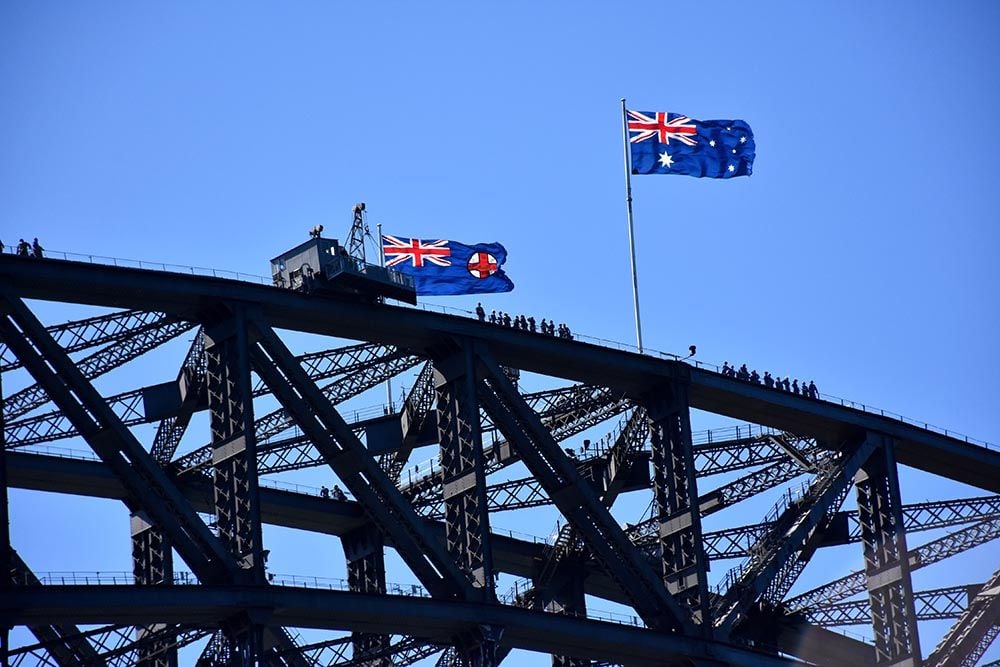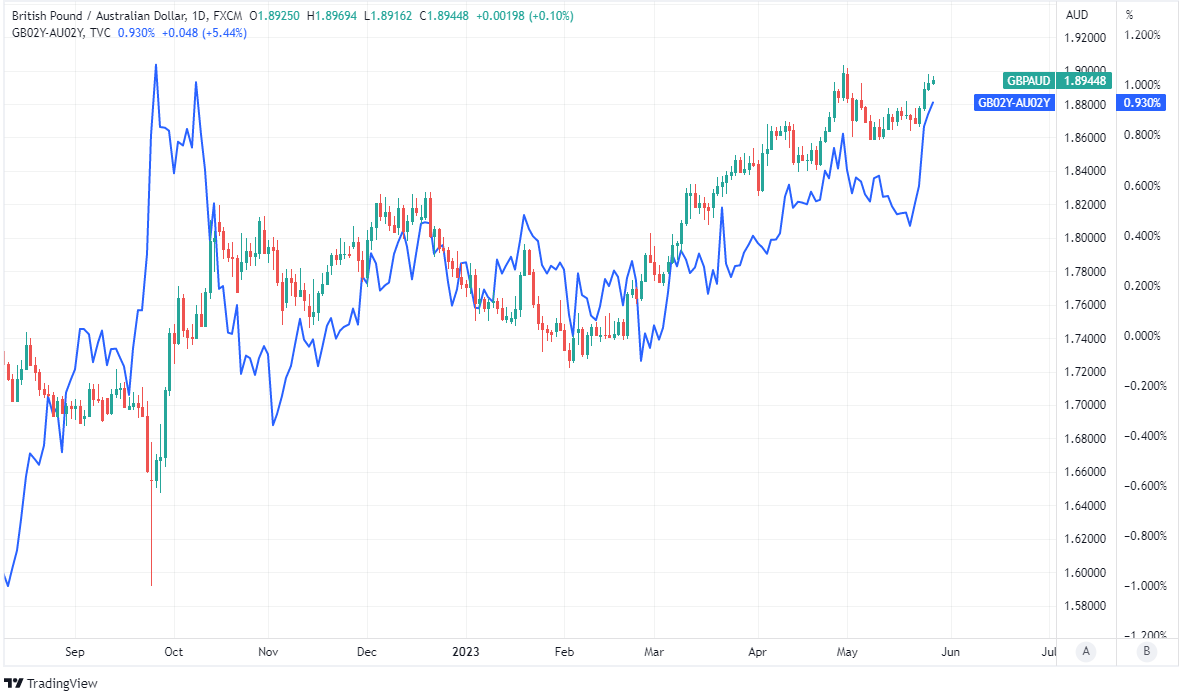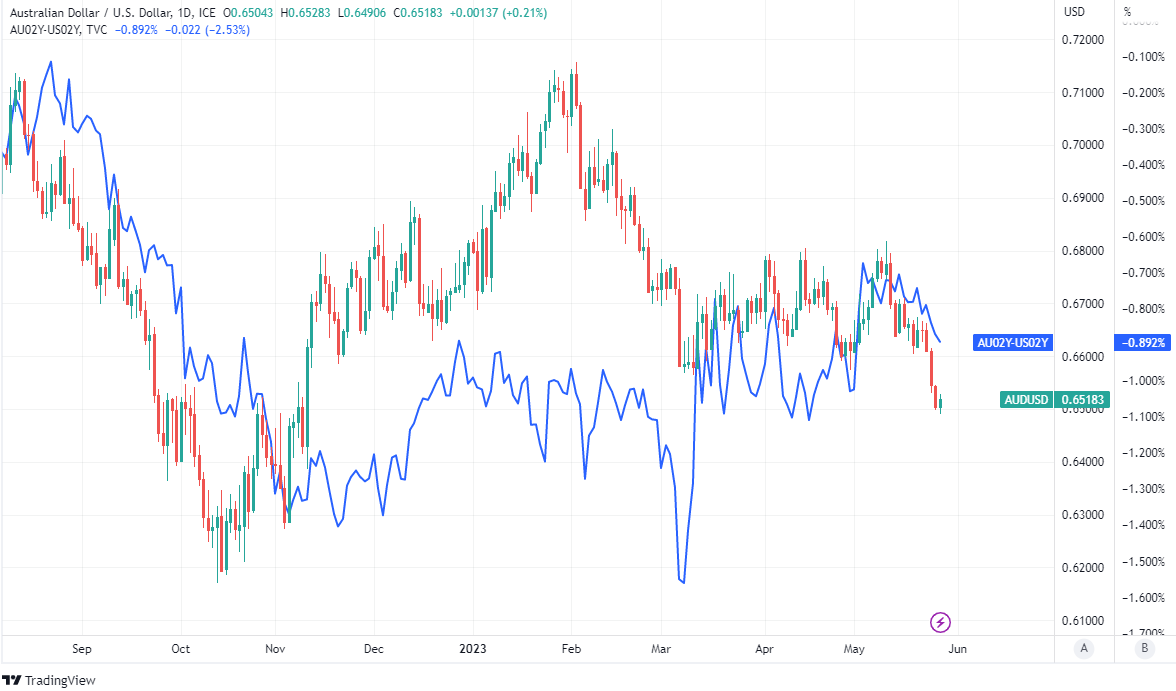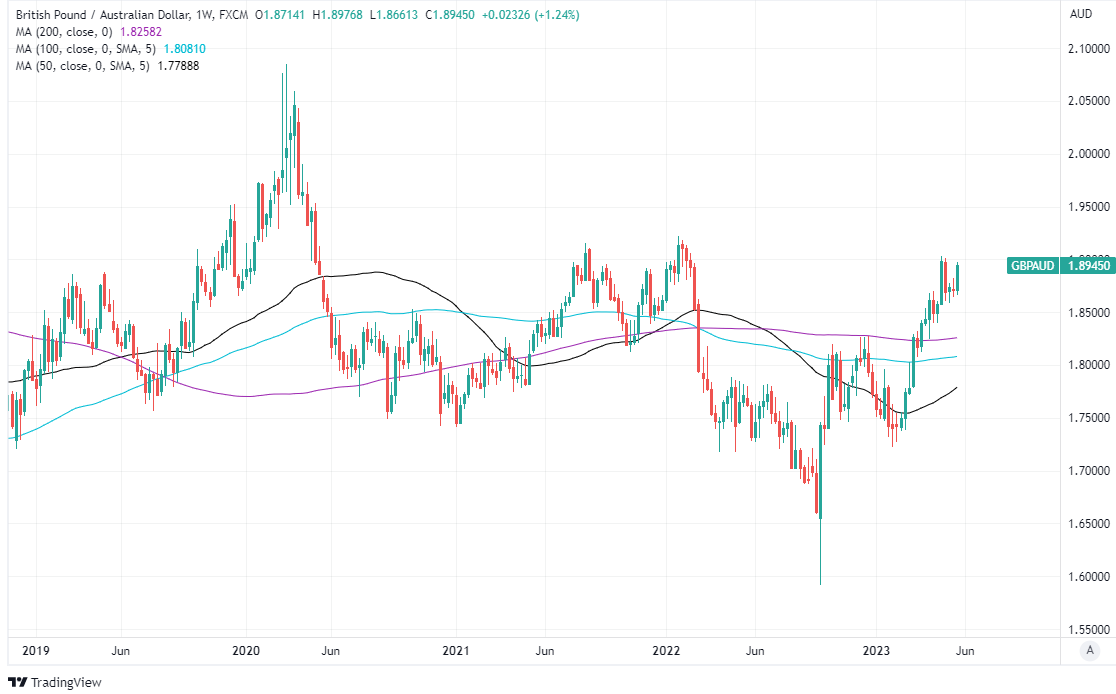GBP/AUD Rate Supported by Yields, Data and Other Currencies
"AUD/USD can therefore fall further if the RBA rate hike pricing is unwound" - Commonwealth Bank of Australia.

Image © Adobe Stock
The Pound to Australian Dollar exchange rate remained buoyant near its highs for the period in the final session of the week as bilateral economic developments helped to maintain an improved bond yield differential as the U.S. Dollar softened and Renminbi strengthened in the background.
Australian Dollars were bought on Friday alongside most other currencies as a rally in the Chinese Renminbi coincided with reports of progress in negotiations over the U.S. government debt ceiling in Washington with the net effect being widespread declines in U.S. Dollar exchange rates.
Gains for the Australian Dollar were a touch more modest than those of Sterling, which may have been helped in its recovery from the week's lows by Office for National Statistics figures suggesting retail sales volumes rose more than expected by economists in April.
"April’s modest recovery in retail sales volumes failed to reverse all of March’s decline and suggests that the trend still is effectively flat, as households’ finances continue to feel the strain of rapid price rises and increasing interest rates," says Gabriella Dickens, an economist at Pantheon Macroeconomics.
UK sales rose 0.5% to surpass a consensus that had looked for a 0.3% increase, although the upside surprise also came alongside a revision to the estimate for March, which saw the earlier announced -0.9% contraction deepened to -1.3%.
 Above: Pound to Australian Dollar rate shown at daily intervals alongside 02-year UK - Australia government bond yield. Click image for closer inspection.
Above: Pound to Australian Dollar rate shown at daily intervals alongside 02-year UK - Australia government bond yield. Click image for closer inspection.
The UK data came after Australian retail sales emerged unchanged with zero growth for April, surprising on the downside of an economist consensus that had looked for a 0.3% increase to build on a 0.4% gain from March.
"The recent run of weak economic data, including the softer than expected April retail trade, does not support another rate hike in June," says Carol Kong, an economist and currency strategist at Commonwealth Bank of Australia.
"AUD/USD can therefore fall further if the RBA rate hike pricing is unwound. But the USD strength and weaker commodity prices will likely be a bigger weight," Kong and colleagues write in a Friday market commentary.
Friday's was just the latest in a lengthening string of indications of a softening Australian economy with others including a surprise fall in employment for April and slower-than-expected wage growth for the first quarter; with both announced just last week.
 Above: AUD/USD shown at daily intervals alongside02-year Australia-U.S. government bond yield. Click image for closer inspection.
Above: AUD/USD shown at daily intervals alongside02-year Australia-U.S. government bond yield. Click image for closer inspection.
"Households are clearly adjusting to the fall in real wages, higher interest rates and accelerating rents," says Pat Bustamante, an economist at St George Bank, in reference to the recent data.
The softer economy is widely seen as the result of more than a year's worth of steady increases in the Reserve Bank of Australia (RBA) cash rate, which was raised to 3.85% earlier this month in a decision that took economists and financial markets by surprise.
But the uplift also came alongside downgrades to forecasts for the Australian economy, forecasts that included the assumption of a -4% weakening of the trade-weighted Australian Dollar exchange rate, which potentially creates room for GBP/AUD to rise further over the coming months.
If any 4% trade-weighted depreciation spreads evenly across the different components of the index, it would imply a GBP/AUD uplift to around 1.95 and could see AUD/USD as low as 0.64 in the months ahead.
 Above: GBP/AUD shown at weekly intervals. Click image for closer inspection.
Above: GBP/AUD shown at weekly intervals. Click image for closer inspection.
GBP/AUD was trading around 1.88 when the May cash rate decision was announced and has remained in a narrow range near that level since then including when the Pound came under pressure earlier this week following the release of UK inflation figures for May.
"Core inflation is accelerating. Core services inflation, ex-housing and housing services, is showing no signs yet of responding to monetary tighteningI," says Brian Martin, head of G3 economics at ANZ.
"As the BoE must continue its fight against inflation, interest rates will need to rise further and stay higher for longer. That means headwinds to leveraged sectors of the economy will persist for quite some time," he adds.
UK inflation fell from 10.1% to 8.7% last month but stopped short of a consensus forecast of 8.3% and also overshot the latest Bank of England forecast of 8.4%, while the more-important core inflation rate actually ticked higher.
Market-implied expectations for Bank Rate rose sharply to suggest as much as a further 1% increase to take the benchmark from 4.5% to 5.5% as a result, though it remains to be seen whether those expectations persist as far out as the next policy decision in June.
